Permaculture companion plants for Borage
| Image | Name | Data | Description | Actions |
|---|---|---|---|---|
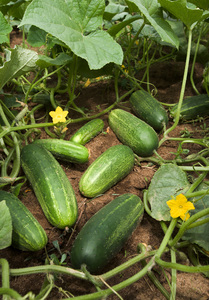
|
Cucumis sativus |
9-11
Annual
Full sun
Moist
Light (sandy), Medium, Heavy (clay)
2
Vines
Fruit, Leaves, Seed
Seed - direct sow, Seed - transplant
1 week after last frost
https://en.wikipedia.org/wiki/Cucumber
Cucurbitaceae
Gurke
50-65
23cm
6.0-6.8
15-30°C (60-85°F)
https://pfaf.org/User/Plant.aspx?LatinName=Cucumis sativus
True
Fruit
Assam, Bangladesh, China South-Central, China Southeast, East Himalaya, Myanmar, Nepal, Thailand, West Himalaya
Alabama, Albania, Andaman Is., Arizona, Arkansas, Austria, Bahamas, Bolivia, Caroline Is., Cayman Is., Colombia, Costa Rica, Cuba, Czechoslovakia, Denmark, Dominican Republic, Ecuador, Florida, Georgia, Gulf of Guinea Is., Haiti, Illinois, India, Jamaica, Kansas, Kazakhstan, Kentucky, Korea, Laos, Leeward Is., Louisiana, Marianas, Marshall Is., Massachusetts, Michigan, Mississippi, Missouri, New Caledonia, New York, Nicaragua, Nicobar Is., North Carolina, North Caucasus, Ohio, Oman, Ontario, Pakistan, Pennsylvania, Pitcairn Is., Puerto Rico, South Carolina, Sri Lanka, Sweden, Tadzhikistan, Trinidad-Tobago, Turkmenistan, Utah, Uzbekistan, Venezuela, Vietnam, Virginia, Windward Is., Zaïre
2-3 weeks before last frost
1 week after last frost
0.9
https://powo.science.kew.org/taxon/urn:lsid:ipni.org:names:292296-1
Oil
Cosmetic, oil
true
|
Cucumber, scientific name Cucumis sativus, is a member of the gourd family. It is native to India and other parts of Asia. Cucumber is a trailing or climbing plant that grows to a height of 5-10 feet. The leaves are dark green and glossy, and the plant produces yellow flowers. The fruit of the cucumber plant is a long, green, edible vegetable with a thin skin. Cucumbers are typically about 6-9 inches long and 2-3 inches in diameter. In terms of growth and cultivation, cucumber plants prefer warm, sunny conditions and well-draining soil. They should be watered regularly, especially during dry periods. Cucumber plants are not winter hardy and should be grown in the summer months in most climates. To cultivate cucumbers successfully, it is important to provide them with adequate space to grow and to support the plants with trellises or other means to keep the fruits off the ground. The plant will develop male and female flowers. You can recognize the female by having a tiny cucumber underneath. Sometimes the plant develops a lot of male flowers first, so be patient. If you don’t see any bees pollinating. Take a male and put it on all the female flowers. Cucumber fruits are edible and can be eaten raw, pickled, or cooked. The skin and seeds of the cucumber are edible, but some people choose to remove the seeds before eating the fruit. Cucumber fruits can be stored in the refrigerator for a few days after harvest. Cucumbers have several uses. In addition to being eaten as a vegetable, they can also be used in a variety of dishes and salads. Cucumber slices are often used as a garnish or as a refreshing addition to beverages. Cucumbers are also commonly used in natural skin care products and are believed to have anti-inflammatory and soothing properties. #### Propagation Direct sow when soil is warm enough in early summer. Sow seeds individually indoors 3-4 weeks before planting outside into warm soil. Use bottom heat if possible. Transplant when plants develop third leaf. #### Medicinal Fruit is depurative, diuretic, emollient, purgative and resolvent #### Links [Cucumber @ West Coast Seeds](https://www.westcoastseeds.com/products/patio-snacker) |
Show
Edit |
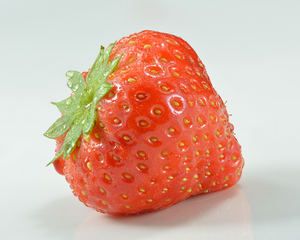
|
Strawberry |
4-8
Perennial
Full sun, Partial sun/shade
Moist
Light (sandy), Medium, Heavy (clay)
0.3
Herbs
Ground cover
True
Fruit, Leaves
https://en.wikipedia.org/wiki/Strawberry
Rosaceae
Erdbeere
https://pfaf.org/User/Plant.aspx?LatinName=Fragaria x ananassa
Aardbei
Jordbær
British Columbia, California, Oregon, Washington
Albania, Baltic States, Belarus, Central European Rus, Denmark, East European Russia, El Salvador, Finland, France, Germany, Great Britain, Guatemala, Honduras, Illinois, Ireland, Italy, Japan, Korea, Netherlands, New York, North European Russi, Northwest European R, Norway, Pitcairn Is., South European Russi, Sweden, Switzerland, Tadzhikistan, Turkey, Turkmenistan, Vermont
0.3
https://powo.science.kew.org/taxon/urn:lsid:ipni.org:names:30117681-2
|
Strawberry (Fragaria × ananassa) is a popular fruit-bearing plant that is native to parts of the Americas, Europe, and Asia. It is a member of the Rosaceae family and is closely related to other fruit-bearing plants such as raspberries and blackberries. The plant has a low-growing, spreading habit, with leaves that are typically green and glossy, and white flowers that give way to red, juicy berries. The fruits are edible and are often eaten fresh, used in jams and jellies, or baked in desserts. Strawberry plants prefer well-draining, moist soil and plenty of sunlight. They can be grown in a variety of climates, but they tend to thrive in temperate regions with cool summers and mild winters. To cultivate the plants successfully, a grower may need to provide adequate irrigation, fertilizer, and pest control. One of the distinctive features of strawberry plants is their runners, which are long, slender stems that grow horizontally along the ground. These runners can be used to propagate new plants, which can be grown in rows or beds to form a dense, ground-covering mat. In addition to their value as a food source, strawberry plants are also prized for their attractiveness to pollinators and other beneficial insects. They are often used in home gardens and on small farms as a way to attract bees, butterflies, and other insects that help to pollinate other plants. Overall, strawberries are a versatile and valuable plant that is prized by gardeners and farmers alike for their delicious fruit and their ability to attract wildlife. |
Show
Edit |
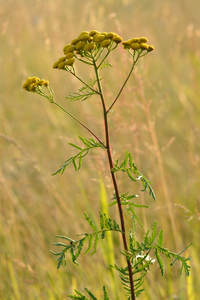
|
Tansy |
3-8
Full sun
Dry, Moist
Light (sandy), Medium, Heavy (clay)
1.0
0.5
Perennial
Herbs
Fast
true
Flowers, Leaves
Common tansy, golden buttons, curly leaf tansy
Rainfarn
Asteraceae or compositae
Albania, Altay, Amur, Austria, Baltic States, Belarus, Belgium, Bulgaria, Buryatiya, Central European Rus, Chita, Corse, Czechoslovakia, Denmark, East European Russia, Finland, France, Germany, Great Britain, Greece, Hungary, Inner Mongolia, Irkutsk, Italy, Japan, Kamchatka, Kazakhstan, Khabarovsk, Kirgizstan, Korea, Krasnoyarsk, Krym, Kuril Is., Magadan, Manchuria, Mongolia, Netherlands, North Caucasus, North European Russi, Northwest European R, Norway, Poland, Portugal, Primorye, Romania, Sakhalin, Sicilia, South European Russi, Spain, Sweden, Switzerland, Transcaucasus, Turkey, Turkey-in-Europe, Tuva, Ukraine, West Siberia, Xinjiang, Yakutskiya, Yugoslavia
Alaska, Alberta, Arizona, Arkansas, Bolivia, Brazil North, Brazil Northeast, Brazil South, Brazil Southeast, Brazil West-Central, British Columbia, California, Colombia, Colorado, Connecticut, Cook Is., Ecuador, Føroyar, Georgia, Iceland, Idaho, Illinois, Indiana, Iowa, Ireland, Kansas, Kentucky, Labrador, Louisiana, Maine, Manitoba, Maryland, Massachusetts, Mauritius, Michigan, Minnesota, Missouri, Montana, Nebraska, Nevada, New Brunswick, New Hampshire, New Jersey, New Mexico, New South Wales, New York, Newfoundland, North Carolina, North Dakota, Northwest Territorie, Nova Scotia, Ohio, Oklahoma, Ontario, Oregon, Panamá, Paraguay, Pennsylvania, Peru, Prince Edward I., Queensland, Québec, Rhode I., Réunion, Saskatchewan, South Australia, South Dakota, Tasmania, Tennessee, Trinidad-Tobago, Tubuai Is., Uruguay, Utah, Venezuela, Vermont, Victoria, Virginia, Washington, West Virginia, Wisconsin, Wyoming
https://en.wikipedia.org/wiki/Tansy
https://pfaf.org/User/Plant.aspx?LatinName=Tanacetum vulgare
https://powo.science.kew.org/taxon/urn:lsid:ipni.org:names:252568-1
0.2
Weed potential
Condiment, Tea
Compost, Dye, Essential Oil, Pest control, Strewing, Dynamic accumulator, Fragrance
|
Show
Edit |
|
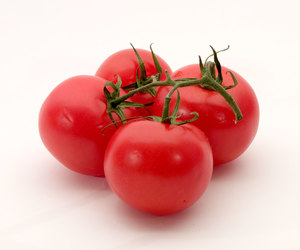
|
Tomato |
10-12
Annual, Perennial
Full sun
Moist
Light (sandy), Medium, Heavy (clay)
2.0
True
Fruit, Seed
https://en.wikipedia.org/wiki/Tomato
Fast
Garden tomato, Dumádu, Garden tomato, Love apple, Lycopersicum esculentum, Tomate, Tomato, Tomato extract containing lycopene, Tomato|thakkali, Tumatis, Lycopersicon esculentum
Solanaceae
Tomate
Oil
https://pfaf.org/User/Plant.aspx?LatinName=Solanum lycopersicum, https://pfaf.org/User/Plant.aspx?LatinName=Lycopersicon esculentum
Start seeds indoors 5-6 weeks before last frost
In containers or in rows in beds around last frost date
6.2-6.8
70-80°f
Peru
Alabama, Alaska, Andaman Is., Angola, Arizona, Arkansas, Assam, Austria, Azores, Bahamas, Bangladesh, Belarus, Benin, Bolivia, British Columbia, Bulgaria, Burkina, California, Cambodia, Cameroon, Canary Is., Cape Verde, Caroline Is., Central African Repu, Chagos Archipelago, Chatham Is., Christmas I., Colombia, Comoros, Connecticut, Cook Is., Costa Rica, Cuba, Cyprus, Czechoslovakia, Delaware, Dominican Republic, East Aegean Is., East European Russia, East Himalaya, Ecuador, Fiji, Florida, Galápagos, Georgia, Gilbert Is., Gulf of Guinea Is., Haiti, Hawaii, Illinois, India, Indiana, Iowa, Ivory Coast, Jawa, Kansas, Kazakhstan, Kentucky, Korea, Laccadive Is., Laos, Leeward Is., Line Is., Louisiana, Madagascar, Madeira, Maine, Malawi, Mali, Marianas, Marquesas, Marshall Is., Maryland, Massachusetts, Mauritania, Mauritius, Michigan, Mississippi, Missouri, Montana, Mozambique, Myanmar, Namibia, Nansei-shoto, Nauru, Nebraska, Nepal, Nevada, New Brunswick, New Caledonia, New Hampshire, New York, New Zealand North, Nicaragua, Nicobar Is., Niue, North Carolina, North Dakota, Nova Scotia, Ogasawara-shoto, Ohio, Ontario, Oregon, Pakistan, Panamá, Pennsylvania, Philippines, Pitcairn Is., Puerto Rico, Québec, Rhode I., Réunion, Saskatchewan, Selvagens, Society Is., South Carolina, South European Russi, Tadzhikistan, Taiwan, Tennessee, Texas, Trinidad-Tobago, Tuamotu, Tubuai Is., Turkey, Turkmenistan, Tuvalu, Utah, Uzbekistan, Venezuela, Vermont, Vietnam, Virginia, Wake I., Wisconsin, Zambia, Zaïre, Zimbabwe
1.00
https://powo.science.kew.org/taxon/urn:lsid:ipni.org:names:316947-2
|
The tomato is a flowering plant native to South America. It is a member of the nightshade family and closely related to the potato. The tomato plant typically grows to a height of 1-3 meters and has a weak, hairy stem. The leaves are arranged alternately on the stem and are typically dark green in color. The plant produces small yellow or white flowers, which develop into the fruit we know as tomatoes. The fruit itself is typically red, but can also be yellow, orange, green, or purple. Indeterminate tomato plants are perennials in their native habitat, but are cultivated as annuals. Determinate, or bush, plants are annuals that stop growing at a certain height and produce a crop all at once. Tomatoes prefer warm, sunny growing conditions and well-drained, humus-rich soil. They can be grown in a variety of soil types, but perform best in soil with a pH between 6 and 6.8. In order to cultivate tomatoes successfully, growers may need to provide support for the plant (such as a stake or cage) to prevent the fruit from weighing down the stem, and may also need to water and fertilize the plant regularly. Tomatoes are generally considered to be frost-sensitive, so in areas with cold winters they may need to be grown in a greenhouse or indoors. There are a great number of cultivars. The edible parts of the tomato plant are the fruit and the leaves. The fruit can be eaten raw or cooked, and is commonly used in a variety of dishes, such as salads, sandwiches, and pasta. The leaves, although not commonly eaten, are also edible and have a slightly bitter taste. After harvest, tomatoes can be stored at room temperature, in a cool place, or in the refrigerator. |
Show
Edit |
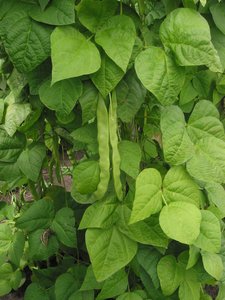
|
Common bean |
2-11
Annual
Full sun
Moist
Light (sandy), Medium, Heavy (clay)
2.0
Vines
Biomass, Dye, antifungal, Nitrogen fixer
true
Leaves, Seed, Seedpod
Seed - transplant, Seed - direct sow
https://en.wikipedia.org/wiki/Phaseolus_vulgaris
Pole bean, Climbing bean, French bean, Bush bean, Dwarf bean, Kidney bean, Green bean
Fabaceae, Leguminosae
Stangenbohne
https://pfaf.org/User/Plant.aspx?LatinName=Phaseolus vulgaris
16-18°c (70-80°f)
6.0-6.8
2.5 cm
16cm
4-10 days
45-85
Fast
Sperzieboon
Costa Rica, Guatemala, Honduras, Mexico Central, Mexico Gulf, Mexico Northeast, Mexico Northwest, Mexico Southeast, Mexico Southwest, Nicaragua, Panamá
Altay, Amur, Andaman Is., Angola, Argentina Northeast, Argentina Northwest, Assam, Baltic States, Bangladesh, Belarus, Bolivia, Bulgaria, Buryatiya, Cameroon, Cayman Is., Central European Rus, Chad, Chita, Colombia, Comoros, Cuba, Czechoslovakia, Dominican Republic, East European Russia, East Himalaya, Ecuador, Ethiopia, Guinea, Gulf of Guinea Is., Haiti, Illinois, India, Iraq, Irkutsk, Jamaica, Jawa, Kazakhstan, Kenya, Khabarovsk, Kirgizstan, Korea, Krasnoyarsk, Kuril Is., Leeward Is., Malaya, Marianas, Maryland, Mongolia, Myanmar, Nepal, New Guinea, New York, Nicobar Is., Nigeria, North Caucasus, North European Russi, Northwest European R, Pakistan, Peru, Philippines, Primorye, Puerto Rico, Queensland, Rwanda, Sakhalin, Senegal, South European Russi, Sri Lanka, Tadzhikistan, Tanzania, Thailand, Togo, Transcaucasus, Trinidad-Tobago, Turkmenistan, Tuva, Uganda, Ukraine, Uzbekistan, Venezuela, Vietnam, Wake I., West Himalaya, West Siberia, Yakutskiya, Zambia, Zaïre
2-4 weeks before last frost
1 week after last frost, 12-14 weeks before first frost
3-5 years
0.4
https://powo.science.kew.org/taxon/urn:lsid:ipni.org:names:514191-1
Coffee, Condiment
|
This entry describes all varieties of the common bean. This includes vining and bush/darf variaties and can have different names depending on their style of growths (see alternate names). These include the kidney bean, the navy bean, the pinto bean, the French bean and the wax bean The common bean, scientific name Phaseolus vulgaris, is a herbaceous annual plant native to the Americas, specifically the regions extending from the southwestern United States to South America. It is a member of the Fabaceae (legume) family. The common bean has a range of different appearances, depending on the variety. Most varieties have a simple, erect stem that grows to a height of 20-60 cm. The leaves are typically green and consist of 3-5 oblong leaflets. The flowers are small and white, pink, or purple in color. The fruit is a legume, which contains the seeds. The common bean is typically a small plant, but some varieties can grow to be quite large, reaching heights of up to 2 meters. The plant grows relatively quickly, with the growing season typically lasting between 60-100 days. The common bean prefers well-drained soil and full sun, but can also grow in partial shade. It is sensitive to frost and should be planted after the last frost date in the spring. To cultivate the common bean successfully, a grower may need to ensure that the soil is adequately fertilized and provide support for the plant to climb, if necessary. The common bean is edible, with the seeds and the young pods being the most commonly consumed parts. The seeds can be cooked and eaten as a protein-rich vegetable, and the young pods can be eaten as a green vegetable. The edible parts can be stored after harvest by drying the seeds or by preserving the young pods in vinegar or oil. The common bean has many uses beyond being a food source. The plant can fix nitrogen in the soil, improving its fertility and making it a useful companion plant for other crops. The dried leaves and stems of the common bean can be used as mulch or as a source of organic matter. In some cultures, the fibers from the stems are used to make ropes or other weaving materials. Additionally, the plant has been used medicinally to treat a variety of ailments. The common bean is also valuable for wildlife. The flowers attract bees and other pollinators, and the plant provides food for a variety of insects, birds, and small mammals. ### Links [Beans Seed Starting Tips @ Harvest to Table](https://harvesttotable.com/beans-seed-starting-tips/) ### Propagation - direct sow Direct-sow beans in spring after all danger of frost has passed and soil is at least 16°C (60°F). In warm-winter regions, sow beans in late summer for harvest in winter. Time sowing so that beans come to harvest before the first frost. |
Show
Edit |

|
Runner Bean |
1-12
Annual, Perennial
Full sun
Moist
Light (sandy), Medium, Heavy (clay)
3.0
true
Flowers, Leaves, Root, Seed, Seedpod
https://en.wikipedia.org/wiki/Phaseolus_coccineus
Fast
Scarlet runner, scarlet runner bean, scarlet conqueror, fire bean, mammoth, red giant phaseolus coccineus ssppolyanthus (cache bean)
Fabaceae or leguminosae
https://pfaf.org/User/Plant.aspx?LatinName=Phaseolus coccineus
Guatemala, Honduras, Mexico Central, Mexico Gulf, Mexico Northeast, Mexico Northwest, Mexico Southeast, Mexico Southwest, Nicaragua, Panamá
Alabama, Amur, Assam, Baltic States, Bangladesh, Belarus, Bulgaria, Central European Rus, China North-Central, China South-Central, China Southeast, Colombia, Czechoslovakia, East European Russia, East Himalaya, Ecuador, Ethiopia, India, Inner Mongolia, Jawa, Kenya, Khabarovsk, Kirgizstan, Korea, Manchuria, Nepal, New Guinea, New Zealand North, New Zealand South, North European Russi, Northwest European R, Pakistan, Primorye, Rwanda, South European Russi, Tanzania, Transcaucasus, Ukraine, Uzbekistan, Wake I., West Himalaya
3-5 years
https://powo.science.kew.org/taxon/urn:lsid:ipni.org:names:513754-1
Nitrogen fixer
|
Show
Edit |
|
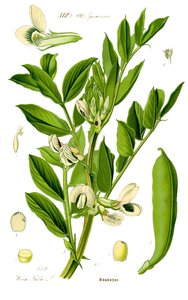
|
Broad Bean |
4-8
Full sun, Partial sun/shade
Moist
Light (sandy), Medium, Heavy (clay)
6.0-6.8
1.0
0.3
Annual
Fast
20cm
Seed - direct sow, Seed - transplant
6 weeks after sowing them in pots
6 weeks after sowing them in pots
21 days
3-5 years
Nitrogen fixer
Leaves, Seed
fava bean, faba bean, Broad bean, or faba bean Varieties with smaller, harder seeds that are fed to horses or other animals are called field bean, tic bean or tick bean Horse bean
Ackerbohne
Fabaceae or Leguminosae
Afghanistan, Iran
Albania, Algeria, Altay, Angola, Argentina South, Assam, Baleares, Bangladesh, Bolivia, Bulgaria, Cameroon, Canary Is., Central European Rus, Chad, China North-Central, China South-Central, China Southeast, Colombia, Corse, Cuba, Cyprus, Czechoslovakia, Dominican Republic, East Aegean Is., East European Russia, Ecuador, Ethiopia, France, Guatemala, India, Iraq, Italy, Jawa, Kenya, Krym, Lebanon-Syria, Leeward Is., Libya, Madeira, Mexico Southwest, Mongolia, Morocco, Myanmar, Nepal, New South Wales, New York, New Zealand North, New Zealand South, Pakistan, Peru, Portugal, Puerto Rico, Rwanda, Sardegna, Sicilia, Spain, Sri Lanka, Sudan, Tibet, Tunisia, Turkey, Turkey-in-Europe, Uruguay, Vermont, Vietnam, West Himalaya, Yemen, Yugoslavia
https://en.wikipedia.org/wiki/Vicia_faba
https://pfaf.org/User/Plant.aspx?LatinName=Vicia faba major
https://powo.science.kew.org/taxon/urn:lsid:ipni.org:names:524737-1
Feb-April; Oct-Nov
sow in deep pots in cool, frost-free place
|
Broad bean (Vicia faba), also known as fava bean or faba bean, is a type of legume that is native to North Africa and the Middle East. It is a popular garden plant, known for its edible beans and attractive purple or white flowers. Broad bean plants have a upright, bushy growth habit and can reach a height of up to 3 feet. The leaves are large and composed of three oval-shaped leaflets, and the flowers are small and clustered in groups of two or three. The beans are produced in long, slender pods that contain two or three beans each. To grow broad beans successfully, it is important to choose a location with well-drained, fertile soil and full sun. The plants should be spaced about 8-12 inches apart, and watered regularly to ensure that the soil stays moist but not waterlogged. Broad beans are generally easy to grow and require little maintenance, but they can be susceptible to pests and diseases, such as aphids and fungal infections. Grows best in temperatures ranging from 60° to 65°F (15-18°C) but will tolerate a range from 40°F (4.4°C) - 75°F (24°C). Broad beans are edible, and the beans can be eaten fresh or frozen, canned or dried for storage. To harvest the beans, the pods should be picked when they are plump and before the beans inside begin to harden. The beans can be removed from the pods by gently squeezing them out. Fresh beans can be stored in the refrigerator for a few days, while dried beans can be stored in an airtight container for several months. In addition to their culinary uses, broad beans also have a number of medicinal properties, and have been used to treat a variety of ailments, including asthma, bronchitis, and anemia. Broad beans are also a valuable food source for many types of wildlife, including birds, insects, and small mammals. The plants provide nectar for bees and other pollinators, and the beans are a popular food for many species of birds. |
Show
Edit |

|
Kale |
5-10
Full sun, Partial sun/shade
Moist
Light (sandy), Medium, Heavy (clay)
6.0-6.8
Deciduous
0.9
Biennial, Perennial
Herbs
Fast
45cm
Seed - direct sow, Seed - transplant
At last frost date
4-6 weeks before last frost
7-10 days
3 to 7 years
Dynamic accumulator
true
Shoots
Brassicaceae, Cruciferae
True
https://en.wikipedia.org/wiki/Kale
https://pfaf.org/User/Plant.aspx?LatinName=Brassica oleracea acephala
Shallow
0.5 cm
60
|
Kale (/keɪl/) is a hardy, leafy green vegetable that is a member of the Brassica oleracea species. It is native to the eastern Mediterranean and Asia Minor, and has been cultivated for food for over 2000 years. Kale plants typically have green or purple leaves that are deeply lobed and can grow up to 2 feet in length. The leaves are attached to a central stem and don't make a head, and the plant produces small, yellow flowers. Kales are considered to be closer to wild cabbage than most of the many domesticated forms of Brassica oleracea. In terms of growing conditions, kale prefers cool weather and does well in full sun to partial shade. It can be grown year-round in mild climates, but in colder climates it is best grown in the fall and early spring. To cultivate kale successfully, it is important to provide the plants with plenty of moisture and to regularly fertilize them. Kale is also a good companion plant for other vegetables, as it can help to deter pests and improve the health of the soil. In terms of edibility, kale is highly nutritious and can be eaten raw or cooked. The leaves and stems are both edible, and the plant can be stored in the refrigerator for several days after harvest. Kale can be used in a variety of dishes, including soups, salads, and smoothies. It can also be cooked and served as a side dish, or used as a garnish. In addition to its culinary uses, kale has a number of other uses. It is often used as a cover crop, as it can help to improve the fertility of the soil. Kale leaves can also be used as a mulch, as they break down readily and release nutrients into the soil. Additionally, kale plants can be used for wind protection, as their large leaves and sturdy stems can provide a barrier to wind. ### Links [Kale @ West Coast Seeds](https://www.westcoastseeds.com/blogs/how-to-grow/grow-kale-collards) |
Show
Edit |

|
Broccoli |
2-11
Full sun, Partial sun/shade
Moist
Light (sandy), Medium, Heavy (clay)
6.0-7.0
0.9
Annual, Biennial
45cm
6-8 weeks before last frost
7-10 days
4°C (40°F)
50-100
3 to 7 years
Companion
true
Flowers, Leaves, Shoots
Brokkoli
Brassicaceae or Cruciferae
https://pfaf.org/User/Plant.aspx?LatinName=Brassica oleracea italica
|
Broccoli is a plant that is native to the Mediterranean region. It is part of the Brassica oleracea family, which also includes other vegetables such as cauliflower and cabbage. Broccoli plants have green, flowering heads that are similar in appearance to cauliflower. The stems are typically thick and can grow to be quite large, depending on the variety of broccoli. The leaves of the plant are typically dark green and are arranged in a spiral pattern along the stem. When it comes to growing conditions, broccoli prefers cool weather and well-draining soil. It is a relatively fast-growing plant, with the flowering heads typically forming in the first year. To cultivate broccoli successfully, a grower will need to make sure the plant gets enough water and sunlight, and provide it with the necessary nutrients through fertilization. In terms of winter hardiness, broccoli is not very frost-tolerant, so it is typically grown as a cool-season crop in areas with mild winters. In terms of edibility, broccoli is a very nutritious vegetable that is packed with vitamins and minerals. The flowering heads and the stems are both edible, and can be cooked in a variety of ways. After harvest, broccoli can be stored in the refrigerator for several days, or frozen for longer-term storage. ### Propagation - Direct sow Sow seeds 7cm apart, thin when seedlings reach 5-7cm in height. ### Propagation - Transplant Start seeds 6-8 weeks before your last frost date, or 2-3 weeks before last frost date. Plant outside when seedlings are 4-6 weeks old, or have 4-5 leaves. #### Links [Broccoli @ Almanac](https://www.almanac.com/plant/broccoli) |
Show
Edit |

|
Brussel Sprouts |
Full sun, Partial sun/shade
Moist
Light (sandy), Medium, Heavy (clay)
1.2
0.2
Biennial
3 to 7 years
true
Leaves
Rosenkohl
Brassicaceae or cruciferae
https://pfaf.org/User/Plant.aspx?LatinName=Brassica oleracea gemmifera
|
A leaf vegetable in the cabbage family. |
Show
Edit |

|
Cauliflower |
3-10
Full sun, Partial sun/shade
Moist
Light (sandy), Medium, Heavy (clay)
0.8
Annual, Biennial
3-7 years
Companion, antifungal, Dynamic accumulator
true
Flowers, Leaves
Blumenkohl
Brassicaceae or cruciferae
https://pfaf.org/User/Plant.aspx?LatinName=Brassica oleracea botrytis
|
Annual plant reproduced by seed. |
Show
Edit |
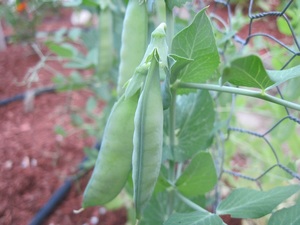
|
Pea |
3-9
Annual
Full sun
Moist
Light (sandy), Medium
2.0
Vines
Nitrogen fixer
true
Leaves, Seed, Shoots
https://en.wikipedia.org/wiki/Pea
Fabaceae or leguminosae
Erbse
https://pfaf.org/User/Plant.aspx?LatinName=Pisum sativum
Afghanistan, Albania, Algeria, Bulgaria, Corse, Cyprus, Egypt, France, Greece, Iran, Iraq, Italy, Krym, Lebanon-Syria, Libya, Morocco, North Caucasus, Palestine, Portugal, Romania, Sardegna, Sicilia, Spain, Transcaucasus, Tunisia, Turkey, Turkey-in-Europe, Turkmenistan, Ukraine, Yugoslavia
Alabama, Altay, Amur, Andaman Is., Assam, Austria, Baltic States, Bangladesh, Belarus, Belgium, Buryatiya, California, Canary Is., Cayman Is., Central European Rus, China North-Central, China South-Central, Chita, Colombia, Costa Rica, Cuba, Czechoslovakia, Dominican Republic, East Aegean Is., East European Russia, East Himalaya, Ethiopia, Fiji, Haiti, Idaho, Illinois, India, Irkutsk, Kamchatka, Kazakhstan, Kenya, Khabarovsk, Kirgizstan, Korea, Krasnoyarsk, Laos, Madeira, Magadan, Marianas, Maryland, Mexico Southwest, Mongolia, Mozambique, Myanmar, Nepal, New Guinea, New South Wales, New York, New Zealand North, New Zealand South, Nigeria, North European Russi, Northwest European R, Oregon, Pakistan, Primorye, Puerto Rico, Rwanda, Sakhalin, South Australia, South European Russi, South Georgia, Sri Lanka, Tadzhikistan, Tibet, Trinidad-Tobago, Tuva, Uganda, Uzbekistan, Vermont, Vietnam, Washington, West Himalaya, West Siberia, Yakutskiya, Yemen
Lathyrus oleraceus
https://powo.science.kew.org/taxon/urn:lsid:ipni.org:names:501912-1
3-5 years
0.3
https://powo.science.kew.org/taxon/urn:lsid:ipni.org:names:60454055-2
|
Peas are a type of legume, native to western Asia and the Near East. They are an annual plant, meaning they grow, flower, and produce seeds within a single growing season. Peas have tendrils that allow them to climb, and their leaves are typically made up of two oblong leaflets and a tendril on a single petiole. Peas produce clusters of small, fragrant flowers that can be white, pink, or purple in color. The flowers give way to pod-like fruits that contain the peas. Peas are a cool-season crop, and prefer to grow in well-drained soil that is high in organic matter. They can tolerate some shade, but will produce the best yields when grown in full sun. Peas can be differentiated from similar plants by their tendrils and the clusters of small, fragrant flowers that they produce. Peas are a relatively small plant, typically growing to a height of one to two feet. They can be grown in rows or as a companion plant, and will typically take between 60 and 90 days to reach maturity. Peas are not winter hardy, and should be planted in the spring as soon as the soil can be worked. Peas are edible, and the seeds inside the pods can be eaten fresh or dried for storage. The leaves and stems of the pea plant can also be eaten, and are a good source of vitamins and minerals. Peas can be used in a variety of dishes, and are a common ingredient in soups, stews, and casseroles. In addition to their culinary uses, peas are also valued for their ability to fix nitrogen in the soil. This makes them a valuable crop for improving soil fertility, and they are often grown as a cover crop or rotated with other crops to improve the overall health of the soil. Peas are also valued by wildlife, and their flowers and seeds are a favorite food for birds and other animals. |
Show
Edit |
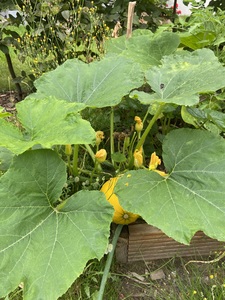
|
Squash |
2-11
Full sun, Partial sun/shade
Moist
Light (sandy), Medium, Heavy (clay)
5.5-5.9
0.6
8
Annual
Vines
Fast
Seed - transplant
after last frost
2 weeks
Flowers, Fruit, Leaves, Seed
Oil
Crookneck squash
Kürbis
Cucurbitaceae
https://en.wikipedia.org/wiki/Cucurbita_moschata
https://pfaf.org/User/Plant.aspx?LatinName=Cucurbita moschata
sow seeds in pots in a greenhouse
boiled root is galactogogue, anthelmintic
oil
true
|
Squash, also known as Cucurbita moschata, is a plant that is native to the Americas. It is commonly used in gardens and farms for its edible fruits and leaves. Squash plants can grow to be quite large, with some varieties reaching heights of up to 10 feet. They tend to grow quickly, with a mature plant producing fruit within a few months of planting. In terms of growing conditions, squash plants prefer full sun and well-draining soil. They also need plenty of water, especially during the hot summer months. To cultivate squash successfully, a grower may need to provide adequate space for the plant to spread out, as well as support for the vines and fruit. Squash needs lots nutrition and therefore needs good soil. It can also be grown on compost The edible parts of squash plants include the fruit and leaves. The fruit can be stored after harvest by keeping it in a cool, dry place. The leaves can also be eaten, either cooked or raw, and can be stored in the same way as the fruit. The fruit can be used in a variety of dishes, including soups, stews, and baked goods. The leaves can be used as a substitute for spinach in many recipes. In addition to its culinary uses, squash has a number of medicinal uses. The leaves have been used to treat a variety of ailments, including infections and inflammation. Squash plants can also be used for fertility, as the large leaves provide shade and moisture for the soil. They can also be used as mulch, wind protection, and ground cover. |
Show
Edit |
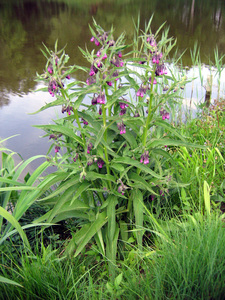
|
Comfrey |
3-9
Perennial
Full sun, Partial sun/shade
Moist
Light (sandy), Medium, Heavy (clay)
1.2
Herbs
true
Leaves, Shoots
https://en.wikipedia.org/wiki/Symphytum_officinale
Fast
Common comfrey, Comfrey, Symphytum
Boraginaceae
https://pfaf.org/User/Plant.aspx?LatinName=Symphytum officinale
Gewone smeerwortel
Lægekulsukker
Altay, Austria, Belarus, Belgium, Bulgaria, Central European Rus, Czechoslovakia, East European Russia, France, Germany, Great Britain, Hungary, Italy, Kazakhstan, Krym, Netherlands, North Caucasus, Northwest European R, Poland, Romania, Sardegna, Sicilia, South European Russi, Spain, Switzerland, Turkey, Turkey-in-Europe, Ukraine, West Siberia, Yugoslavia
Alberta, Argentina Northeast, Arkansas, Baltic States, Brazil West-Central, British Columbia, California, China North-Central, China Southeast, Chita, Colorado, Connecticut, Delaware, Denmark, District of Columbia, Dominican Republic, Finland, Georgia, Haiti, Idaho, Illinois, Indiana, Ireland, Kentucky, Korea, Maine, Manchuria, Manitoba, Maryland, Massachusetts, Michigan, Minnesota, Missouri, Montana, New Brunswick, New Hampshire, New Jersey, New Mexico, New York, Newfoundland, North Carolina, North European Russi, Norway, Nova Scotia, Ohio, Ontario, Oregon, Pennsylvania, Primorye, Québec, Rhode I., Saskatchewan, Sweden, Taiwan, Tasmania, Utah, Vermont, Vietnam, Virginia, Washington, West Virginia, Wisconsin, Wyoming, Xinjiang
Beinwell, Wallwurz, Beinwurz
60cm
https://powo.science.kew.org/taxon/urn:lsid:ipni.org:names:120815-1
Gum, Tea
Biomass, Compost, Gum, Dynamic accumulator
|
Comfrey (Symphytum officinale) is a perennial plant that is native to Europe and Asia. It belongs to the family Boraginaceae, which includes around 300 species of plants. Comfrey is a popular garden plant, known for its large, hairy leaves and bell-shaped, white or purple flowers. The plant has a sprawling growth habit and can reach a height of up to 3-4 feet. The leaves are large, oval-shaped, and covered in fine hairs, and the flowers are clustered in elongated spikes at the ends of the stems. To grow comfrey successfully, it is important to choose a location with well-drained, fertile soil and full sun or partial shade. The plant is tolerant of a wide range of soil conditions, but prefers moist, slightly acidic soil. Comfrey can also be grown in containers, and will benefit from regular watering and fertilization. The plant is relatively easy to grow and requires little maintenance, but can be susceptible to pests and diseases, such as slugs and fungal infections. Comfrey is not edible, and the leaves and roots of the plant contain toxic compounds that can cause irritation and allergic reactions in some people. However, the plant has a number of other uses, including medicinal and horticultural applications. The leaves and roots of the plant are high in nutrients, and are often used as a natural fertilizer for plants. The leaves can also be used to make a medicinal tea, and have been used to treat a variety of ailments, including wounds, bruises, and respiratory disorders. Comfrey is also a valuable food source for many types of wildlife, including bees, butterflies, and other pollinators. The flowers attract a wide range of insects, and the leaves and roots are eaten by animals such as rabbits and deer. The plant can spread rapidly and is considered invasive in some areas. |
Show
Edit |